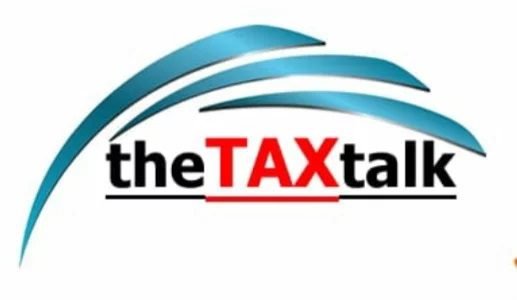![]()
Reassessment, Unexplained Deposits & Section 148A: ITAT Ahmedabad Rules on Limitation & Justification
In a recent and significant ruling, the Ahmedabad Bench of the Income Tax Appellate Tribunal (ITAT) in the case of Prakash Babulal Bhandari vs. Income Tax Officer (ITA No. 737/Ahd/2025, Order dated 18.06.2025) has shed fresh light on the reassessment framework introduced post-01.04.2021 under Section 148A of the Income Tax Act, 1961 – particularly dealing with unexplained bank deposits and the limitation period under Section 149(1)(b).
Background of the Case:
The assessee, Mr. Prakash Babulal Bhandari, had filed his return of income for the relevant assessment year declaring a total income of ₹7,77,960. However, the department subsequently received information about high-value transactions aggregating to ₹55,60,705 in the assessee’s account with Renuka Mata Multi State Urban Cooperative Credit Society Ltd.
Believing that these deposits were indicative of unaccounted income, the Assessing Officer (AO) initiated reassessment proceedings under Section 148, relying on the newly introduced procedure under Section 148A.
AO’s Belief and Reassessment Initiation:
The AO formed a “reason to believe” that the bank account was used for routing unaccounted income. Accordingly, a notice was issued to the assessee under Section 148A(b), seeking explanation.
In response, the assessee offered a detailed reply stating that ₹14,34,183 out of the ₹55.6 lakh represented the maturity proceeds of fixed deposits – clearly identifiable and documented.
After considering the reply, the AO accepted the partial explanation and passed an order under Section 148A(d), initiating reassessment proceedings under Section 147. Finally, an addition of ₹41,26,522 was made under Section 69 (unexplained income).
Key Legal Issue Before ITAT:
The primary issue raised by the assessee before the ITAT was whether the notice issued was barred by limitation under Section 149(1)(b), and whether the AO was justified in initiating reassessment when some portion of the deposits had a plausible explanation.
Let’s understand the legal context.
Legal Provisions in Focus:
1. Section 148A (Effective 01.04.2021):
This section mandates a pre-notice inquiry before issuing notice under Section 148. The AO must:
- Conduct inquiry with prior approval [Sec. 148A(a)],
- Provide an opportunity of being heard to the assessee [Sec. 148A(b)],
- Consider the reply and pass a speaking order [Sec. 148A(d)].
2. Section 149(1)(b):
As per the amended provision, where the income chargeable to tax represented in the form of asset, which has escaped assessment and is more than ₹50 lakh, the time limit for issuing notice is up to 10 years from the end of the relevant AY.
So, the key question here was: Did the case qualify for reopening beyond 3 years but within 10 years, based on the ₹50 lakh threshold?
Tribunal’s Observations:
While the full judgment text is awaited, the ITAT’s decision is reported to have discussed these crucial issues:
- Burden of proof on AO:The Tribunal reiterated that the AO must justify the escapement of income exceeding ₹50 lakh with credible material evidence, especially when initiating action beyond 3 years under the extended limitation clause.
- Asset requirement under Section 149(1)(b):The Tribunal is understood to have considered whether mere deposits in a cooperative bank account qualify as an “asset” for the purpose of invoking extended limitation.
- Partial acceptance of explanation:Since ₹34 lakh was already accepted as explained, the net unexplained amount stood at ₹41.26 lakh – below the ₹50 lakh threshold.
Likely Outcome:
If indeed the Tribunal held that the addition of ₹41.26 lakh falls below the threshold required for a 10-year limitation, then the reassessment proceedings would be time-barred, thereby rendering the entire reopening invalid.
This would mark an important precedent in reinforcing the need for the AO to clearly demonstrate and quantify the amount of escapement that exceeds ₹50 lakh – and that too, in the form of an asset.
Takeaways for Taxpayers & Professionals:
1. Cooperative Society Deposits = Asset?
Not every bank deposit qualifies as an “asset” for the purpose of extended reassessment. This opens the door for interpretation, especially when the source is known or partially explained.
2. Threshold of ₹50 Lakh is Key:
For reassessment after 3 years but within 10 years, only the income represented in the form of asset exceeding ₹50 lakhcan trigger notice. Partial additions may not suffice.
3. Detailed Pre-Reassessment Procedure:
The procedural rigour under Section 148A is not mere formality. A well-drafted reply during this stage can sometimes nip the reassessment in the bud.
4. Documentary Evidence is Crucial:
The assessee’s ability to substantiate the FD maturity proceeds with documents played a key role in reducing the addition substantially.
Conclusion:
This case from the Ahmedabad ITAT underscores the importance of judicial checks on reassessment proceedings, especially under the new regime. The amended law gives more powers to the AO – but also requires more responsibility, documentation, and due process.
Taxpayers and consultants must carefully evaluate bank transaction mismatches flagged in AIS/TIS and preemptively maintain records to avoid unwarranted additions. Reassessment under Section 148 is no longer a mere procedural extension – it’s a battle of facts, documentation, and statutory compliance.
The copy of the order is as under:


